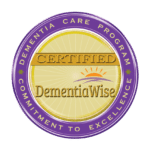 Are you a family caregiver for someone who has Parkinson’s disease? If so, it is understandable that you may be scared and overwhelmed. This disease can manifest itself in various ways from one person to the next. This means, even if you thought you knew what would happen if someone in your life got this disease, things may be different. However, learning more about the Parkinson’s disease stages can at least give you an idea of what to expect.
Are you a family caregiver for someone who has Parkinson’s disease? If so, it is understandable that you may be scared and overwhelmed. This disease can manifest itself in various ways from one person to the next. This means, even if you thought you knew what would happen if someone in your life got this disease, things may be different. However, learning more about the Parkinson’s disease stages can at least give you an idea of what to expect.
Parkinson’s Disease: Stage One
In the first stage of this disease, your elderly loved one might only have mild symptoms. These symptoms might not significantly impact their life. Your elderly loved one will likely still be able to do many activities and tasks. However, they may have some tremors and other movement issues. Usually, in stage one, these symptoms affect one part of the body. You or a senior care provider might notice that your loved one experiences facial expression changes, issues walking, or problems with their posture.
Parkinson’s Disease: Stage Two
During the second stage of this disease, you and the senior care providers may notice more symptoms progressing in your loved one. You might notice they have additional issues with moving around. They may be rigid and have more tremors. At this point, the symptoms are likely affecting the left and right side of their body. The issues with their posture and walking are more noticeable now. Your elderly loved one will likely still be living on their own. However, they might need more help from senior care providers to do certain tasks.
Parkinson’s Disease: Stage Three
The third stage of this disease is where you will notice more movement and balance issues in your elderly loved one. They may move around much slower, when they move around at all. Your elderly loved one has a much higher risk of falling at this point. They can still do many things independently. However, your loved one will need more help with various other daily tasks like getting themselves dressed.
Parkinson’s Disease: Stage Four
During the fourth stage of this disease, your elderly loved one will have more severe symptoms. These symptoms will limit them in many ways. Your elderly loved one might be standing on their own without help. However, moving around, especially without a walker, will be highly unlikely. If your elderly loved one is living on their own, they will need help day and night with daily living activities.
Parkinson’s Disease: Stage Five
During the fifth stage of this disease, your elderly loved one will experience debilitating symptoms. These are very severe. They may have stiff legs that make it nearly impossible for them to walk or stand. Your elderly loved one might need to be in a wheelchair and may end up being bedridden. If your elderly loved one still lives in their home, they will need care 24/7 from you, senior care providers, or others who are knowledgeable enough to help. Some of the things your elderly loved one will need help with is bathing, brushing their teeth, and eating.
Conclusion
These are the stages of Parkinson’s disease. Now that you know what to expect as a family caregiver, you can make a plan for how to care for your elderly loved one. Don’t be afraid to get help from senior care providers.
Sources
https://www.nia.nih.gov/health/parkinsons-disease
If you are considering senior care in Katy, TX, for an aging loved one, please call the caring staff at At Your Side Home Care. We will answer all of your senior care questions. Call today: (832) 271-1600.
Our Certified Nurse Aides, 24-Hour Live-in Assistants and Home Health Aides are available 24 hours a day, 365 days a year. We also provide the security and confidence of 24-hour Telephone Assistance, so fast, reliable help is always available when it's needed. To learn more about our homecare services see our homecare services page.
Different people need different levels of homecare. To meet the requirements of our clients, At Your Side Homecare maintains consistent staffing levels of caring professionals. Homecare service is available for as little as a few hours a week, or as many as 24 hours a day, seven days a week
- 5 Signs a Senior Might Be in the Beginning Stages of Dementia - April 25, 2025
- What Solutions Can Help Seniors with Mental Health Challenges? - April 18, 2025
- How Does Senior Home Care Help Make Aging in Place Possible? - April 11, 2025



